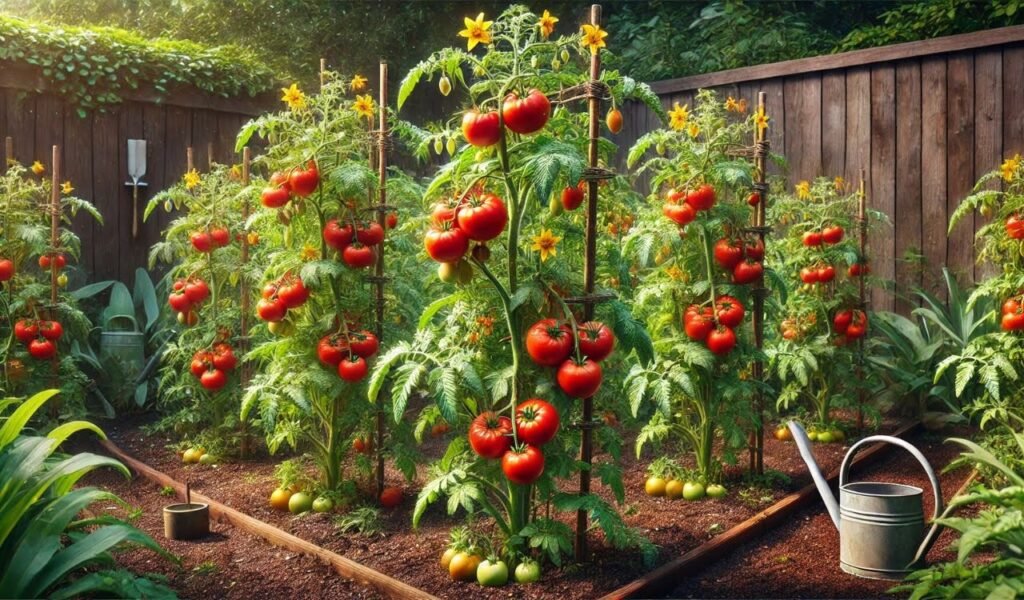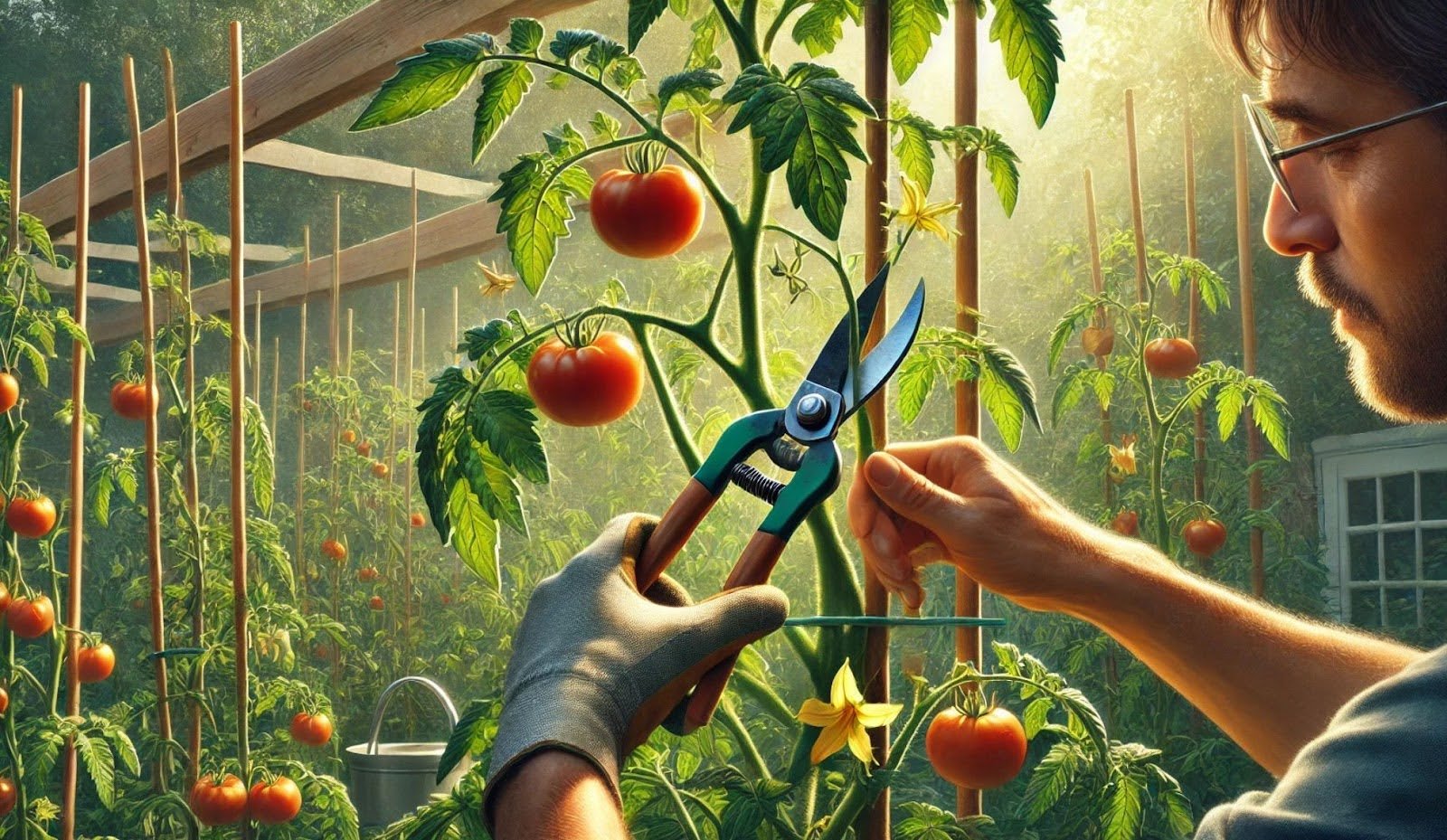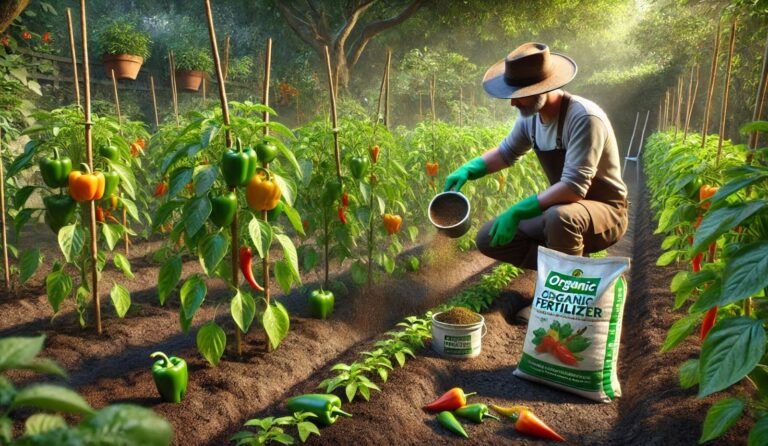How to Prune Indeterminate Tomato Plants Step-by-Step Guide
How to prune indeterminate tomato plants might sound tricky, but it’s the secret sauce to a thriving, high-yield garden. Done right, pruning keeps your plants healthy, boosts fruit size, and makes your tomato-growing game way easier. Think fewer leaves, bigger, juicier tomatoes. Curious about what to snip, when, and why? This guide breaks it all down, step-by-step, so you can get the most out of your plants. Let’s dive in and make those tomatoes thrive!
What Are Indeterminate Tomato Plants?

How to prune indeterminate tomato plants? Indeterminate tomato plants are vigorous growers known for their continuous production of fruit throughout the season. These vining varieties differ significantly from determinate tomatoes, which stop growing after a certain point and ripen their fruits all at once.
Key characteristics of indeterminate tomato plants include:
- They can grow indefinitely, often reaching heights of 6 to 10 feet or more if well-supported.
- Their flowers and fruits form along the sides of the stem rather than at the tips, allowing continuous growth and production.
- They require regular maintenance, including staking or trellising, to manage their sprawling growth habit.
Why Pruning Is Crucial for Indeterminate Varieties
Pruning is vital for these plants because:
- Excess Foliage: Indeterminate tomatoes produce a lot of foliage, which can crowd the plant and reduce airflow.
- Disease Prevention: Overcrowding creates a moist environment where fungal diseases like early blight or powdery mildew thrive.
- Energy Efficiency: By pruning unnecessary growth, the plant redirects energy toward producing quality fruits rather than excessive leaves or stems.
Why Pruning Is Important
Pruning isn’t just about keeping the plant neat; it’s a strategic gardening technique with multiple benefits:
Enhanced Airflow: Thick foliage traps humidity and restricts air circulation, making the plant vulnerable to diseases. Pruning opens up the plant, allowing air to circulate freely. This is especially helpful in humid climates or after heavy rains.
Improved Sunlight Penetration: Sunlight is essential for photosynthesis and fruit ripening. By removing excess foliage, you expose more of the plant to sunlight, ensuring better growth and tastier tomatoes.
Reduced Pest and Disease Risks: Moisture-laden foliage invites pests like aphids and diseases like blight. Pruning minimizes hiding spots for pests and reduces the risk of fungal infections.
Larger, Healthier Tomatoes: When you reduce unnecessary growth, the plant channels its energy into fewer, but larger, fruits. The result? Bigger, more flavorful tomatoes that are easier to harvest.
Tools Needed for Pruning
Having the right tools at hand is crucial for an efficient and safe pruning process.
Essential Pruning Tools
- Sharp Garden Shears: These are necessary for cutting thicker stems cleanly without damaging the plant.
- Pruning Knife: Ideal for precision cuts on small shoots.
- Gloves: Protect your hands from thorny stems and sticky sap.
- Tool Sanitizer: A disinfectant like rubbing alcohol helps prevent the spread of diseases between plants.
When to Prune Indeterminate Tomato Plants
Timing is everything when it comes to pruning. Here’s what you need to know:
Best Time of Day
Prune in the morning when the plant is well-hydrated, and the temperatures are cooler. This minimizes stress on the plant and gives wounds time to dry before nighttime dew or rain sets in.
Optimal Growth Stage
Start pruning when the plant reaches about 12-18 inches in height. At this point, the plant has enough foliage to support photosynthesis, but the first suckers will also appear. Regular pruning every 1-2 weeks is best.
Seasonal Considerations
- Early Season: Focus on establishing a strong main stem and removing lower leaves.
- Mid-Season: Maintain the plant’s shape and remove excess suckers.
- Late Season: Stop pruning a few weeks before the end of the season to let remaining fruits mature.
Step-by-Step Guide: How to Prune Indeterminate Tomato Plants
Step 1: Identify Suckers
Suckers are the small shoots that grow in the leaf axils (the angle between the main stem and a branch).
What Are Suckers?
Suckers are small shoots that grow in the leaf axils, where the leaf stem meets the main stem.
Why Remove Them?
Suckers take energy away from fruit production and contribute to overcrowding.
Step 2: Decide Which Stems to Keep
Choose 1-2 strong main stems to form the plant’s structure. Remove competing stems and suckers to maintain an organized, manageable plant.
Step 3: Safely Remove Unwanted Growth
Use your fingers to pinch off small suckers, or clean shears for larger ones. Avoid tearing, as it can damage the plant and increase the risk of infection.
Step 4: Trim Lower Leaves
Remove leaves that touch the ground or are below the first fruit cluster. This prevents soil-borne diseases from splashing onto the plant during watering or rain.
Common Mistakes to Avoid
- Over-Pruning: Removing too much foliage can expose fruits to sunscald and reduce photosynthesis. Always leave enough leaves to support plant health.
- Under-Pruning: Neglecting to prune can lead to overcrowding, poor airflow, and smaller fruits.
- Using Dirty Tools: Unclean tools can spread diseases like bacterial wilt or mosaic virus. Always sanitize tools between plants.
- Pruning at the Wrong Time: Avoid pruning during wet weather or the hottest part of the day to reduce stress and prevent infections.
Pruning Tips for Maximum Yield

- Use Proper Support Systems: Trellises, stakes, or cages help support the plant’s weight and keep it upright after pruning.
- Space Plants Correctly: Provide at least 2-3 feet of space between plants to prevent overcrowding.
- Water and Mulch Strategically: Deep watering and mulching after pruning help reduce stress and retain soil moisture.
- Inspect Regularly: Check for new suckers every 1-2 weeks to stay ahead of excessive growth.
FAQ
Should I prune tomato plants?
Yes, especially indeterminate varieties. Pruning helps direct energy toward fruit production and reduces the risk of diseases.
When is it too late to prune tomato plants?
It’s rarely too late to prune, but heavy pruning late in the season can stress the plant. Focus on light maintenance pruning if needed.
What happens to an over-pruned tomato plant?
Over-pruning can lead to sunscald, reduced photosynthesis, and a weakened plant. Always leave enough foliage to maintain plant health.
Can I prune flowering stems?
It’s better to avoid pruning stems with flowers, as they will soon develop into fruit.
Final Thoughts
How to prune indeterminate tomato plants isn’t just a maintenance task—it’s a powerful way to boost your garden’s productivity and create healthier, more manageable plants. By following this guide, you’ll be well-equipped to tackle the pruning process with confidence. With consistent care, your plants will reward you with an abundant harvest of juicy, flavorful tomatoes all season long. Ready to start pruning? Let’s grow!







